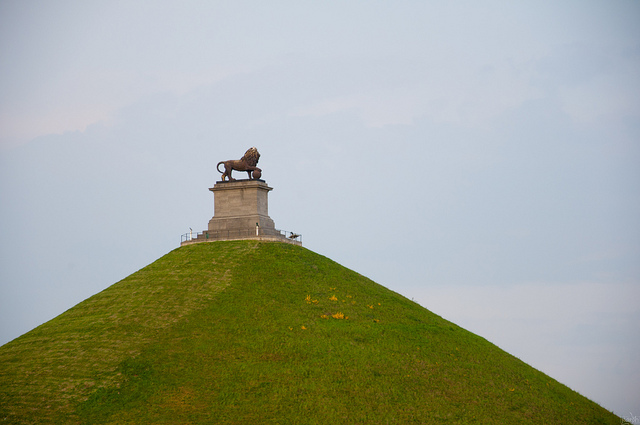Yesterday was the 200th anniversary of the battle of Waterloo. It’s not an anniversary likely to attract much attention in the average Aussie pub, but perhaps one that strategists might like to mark. The battle ensured that it was the Congress of Vienna, rather than Napoleon, that shaped Europe’s strategic landscape for the next half a century. But more broadly the battle brought the age of Napoleonic warfare to an end. What it couldn’t do, though, was erase the changes in the character of warfare that the revolutionary age had introduced, some of which endure to this day.
Critics say that, with one major exception, Napoleon didn’t much change the nature of the battlefield. Troops still fought and marched on their feet or on horseback. And their weapons were still muskets, cannon, bayonets and sabres. The muskets were so inaccurate that troops didn’t train in marksmanship; they drilled so they could fire in unison.
The one major exception, of course, was the number of troops involved, which increased dramatically under the Napoleonic model. But that produced its own side-effects: importantly, it enabled a more aggressive approach to warfare than the usual 18th-century pattern of defensive manoeuvres and sieges. In particular, it pushed commanders towards ‘decisive battles’—seeking to defeat an adversary at his strongest point. After all, there wasn’t much sense in bringing a large army onto the battlefield and then not using it.
The instruments with which warfare were managed were also changed. States became adept at conscripting citizens into their armies, and deploying larger forces into the field. The logistics train was still inadequate, and Napoleon’s armies still basically lived off the land during key offensives, but the bureaucracies necessary for the raising and sustaining of armies became better developed.
But what was changed most of all by the age was the perception that warfare was waged by armies who represented states which in turn represented peoples. Since the Peace of Westphalia in 1648, the dominant pattern had been that warfare was waged by armies who represented states which in turn represented crowns. As Larry Addington, author of The patterns of warfare since the eighteenth century drily notes, the revolutionary age signalled the move from ‘dynastic’ to ‘national’ warfare: ‘warfare on land was transformed from conflicts between monarchs to great struggles between peoples’.
In this picture of history the US and French revolutions were enablers: they freed up citizenries motivated by nationalism and concepts of absolute good—liberty, equality, fraternity—to contribute to war. In an important sense, they represent what we might think of as the democratisation of war, and that legacy endures.
Still, warfare was just as bloody. Poorly-trained citizen soldiers were often out-fought by professional veterans. And by 1815 Europe was wearied by years of warfare. Essentially, the 25 years since the French revolution were violent ones. The sole consoling thought—and it’s only possible to have it in retrospect—is that the Napoleonic era was essentially warfare in its pre-industrial form. When western states began to return to the battlefield later in the 19th-century they faced a transformed battlefield, where massed firepower had begun to complement massed manpower, and where trenches offered increasing protection against the volumes of metal flying through the air.
Nowadays, some of the concepts of Napoleonic warfare look dated to our 21st-century eyes. Mass has yielded ground to precision in our conduct of war. And citizen-soldiers increasingly find themselves replaced by professional militaries. But the anniversary of the battle of Waterloo is a timely occasion to recall the key bridging role that Napoleonic warfare plays between the early-modern warfare of the 17th and 18th centuries and the industrial and post-industrial warfare of the 20th and 21st centuries.


